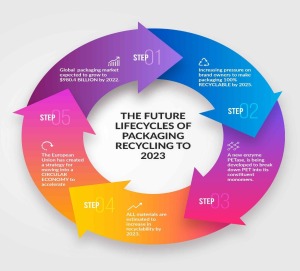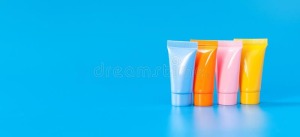Business
Examining 5 Latest Trends in Packing Design

Businesses that don’t carefully plan their packaging design are setting themselves up for failure. All of the trends in packing design show us that it plays an important role. Think about it; there are thousands of brands in the market. Each one is looking for ways to stand out in the crowd. Proper packaging will differentiate your products.
Packaging also plays a crucial role in customers’ buying habits. First impressions are lasting, and packaging is the first thing that they see. Furthermore, colors cause a subconscious emotional reaction,and so it’s essential that the color of the packaging is designed with this in mind. For instance, light blue exhibits a playful mood, while dark blue is considered by many to be more professional.
Product packaging is also a powerful marketing tool. Branded products are highly recognizable and attractive. Make sure that your brand logo is the center of attention. More importantly, make sure you always consider how your products are displayed. Because this is the first impression that many customers are going to have of your brand, so it’s essential to make it a good one.

Five Latest Trends in Packing Design
With that in mind, let’s look at five of the latest trends in packing design.
1. Keep it Smart and Simple
We live in an age of minimalism, and that trend is not going to change anytime soon. More brands are changing their mindset to a “smart and simple” approach. This simple packing philosophy allows businesses to focus more on brand identity.
Following this trend, packaging designers are pulling all elements that are not essential for their products. They are replacing those elements with items that convey their brand’s identity. The core identity of packaging has transformed into color and typeface. It is hence important for these two elements to be used to help foster customer emotion rather than trying to stand out with overly complicated designs.
2. Bold Colors will Work Best
Most shoppers are going to base their first reaction to a product on sight. That is why marketing experts use an idea known as the “Pantone Color System” when designing labels. In layman’s terms, Pantone colors spark several different emotions depending on the combination used.
Therefore, packaging designers are going to design their labels based on this system carefully. For example, we see pink on a lot of dessert packages because it’s a color that’s associated with “sweet.” We see blue on lock packages because that color is associated with “security.”
The Pantone Color System is not just limited to packaging either. You should use it with graphics, logos, company websites, and all forms of print advertisements.
3. Plastic-Free Packaging
The movement for a better environment has caught on, so it’s vital that your business embrace it. We’re starting to see companies back the science behind creating renewable packaging materials. This is one of the trends in packing design that is unlikely to change. In fact, it is expected to continue growing.
It’s good news for businesses too because reducing packaging waste might be a cheaper alternative anyway. There are a lot of areas where you can adopt this into your packaging. For example, manufacturers of bottled water are starting to use recycled plastic to make new bottles.
Plastic has become so embedded in our minds that it’s difficult to break the cycle. It has a ton of functional benefits, which is why it caught on in the first place. One workaround is cellulose-based plastics since it’s biodegradable. Since customers are starting to demand that companies become plastic-free, one can foresee advances in the science behind biodegradable plastics in the coming years.
4. Classic Vintage Style Packaging
Minimalism has brought about the emergence of retro aesthetics. We are living in an age of nostalgia. Just take one trip to the movie theatre to see this phenomenon first-hand. People are being swept away by nostalgia and packaging is not immune to this effect. It is easy to explain if you check out Mountain Dew and the popularity of its retro design.
It is a good idea to cash in on this wave of nostalgia. Creating packing designs with a carefully planned retro feel can generate more sales. The fact is that so many companies are so focused on innovation that they ignore the fact that nostalgia sells.
5. Sustainable Packaging Plays an Important Role
With the drive to a greener planet, the popularity of creating sustainable packaging has never been more critical. People are beginning to become conscious about how the various products that were being used to package their favorite products are damaging the environment. So they are demanding that companies start taking proactive steps to prevent this. It’s a beautiful opportunity for your business to stand out in a crowd.
Find creative ways to use renewable materials for packaging. Not only will it help you bring in loyal customers, but it is a way to help clean up the environment. It’s a win-win situation!
Wrapping it All Up
To summarize everything we’ve discusses so far, customers are much more conscious about the packaging of their favorite products. They pay close attention to labels and every detail. So let’s wrap this up by taking a final look at what makes packaging stand out in a crowd:
Choosing the right colors is important since it portrays emotion. Customers are going to feel a certain way when seeing colors, even though they don’t realize it. Blue makes people feel secure, which is why law enforcement wears this color.
- Unique packaging does stand out in a crowd, but so does vintage. There is a fine line between unique and nostalgia. The product will dictate the packaging.
- Make sure packaging is easy to handle. Consumers want simplicity when handling and opening packages.
- Packaging must be secure. Secure packaging will influence buyers since they want assurance that their product is not damaged when buying it.
- Customers read labels, so make sure to include all relevant information on your product labels. If you are using plastic-free packaging, then make sure you list it.
The Artwork Abode understands these trends in packing design as they show us that packaging has the potential to transform an average product into a best-seller!
-

 Tech11 years ago
Tech11 years agoCreating An e-Commerce Website
-

 Tech11 years ago
Tech11 years agoDesign Template Guidelines For Mobile Apps
-

 Business6 years ago
Business6 years agoWhat Is AdsSupply? A Comprehensive Review
-

 Business10 years ago
Business10 years agoThe Key Types Of Brochure Printing Services
-

 Tech8 years ago
Tech8 years agoWhen To Send Your Bulk Messages?
-

 Tech5 years ago
Tech5 years ago5 Link Building Strategies You Can Apply For Local SEO
-

 Law5 years ago
Law5 years agoHow Can A Divorce Lawyer Help You Get Through Divorce?
-

 Home Improvement6 years ago
Home Improvement6 years agoHоw tо Kеер Antѕ Out оf Yоur Kitсhеn

































